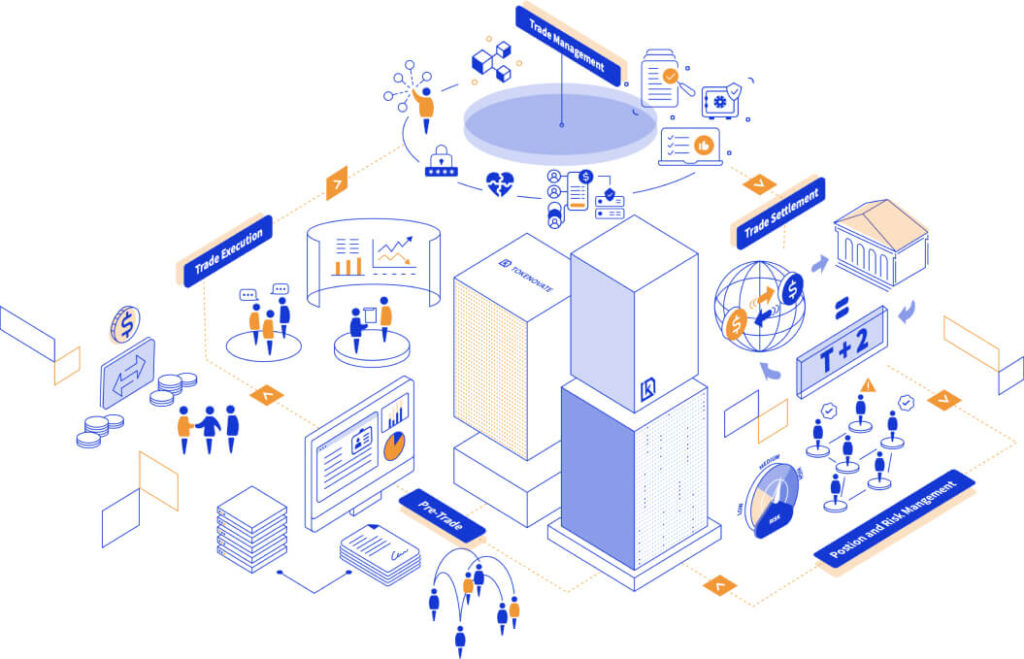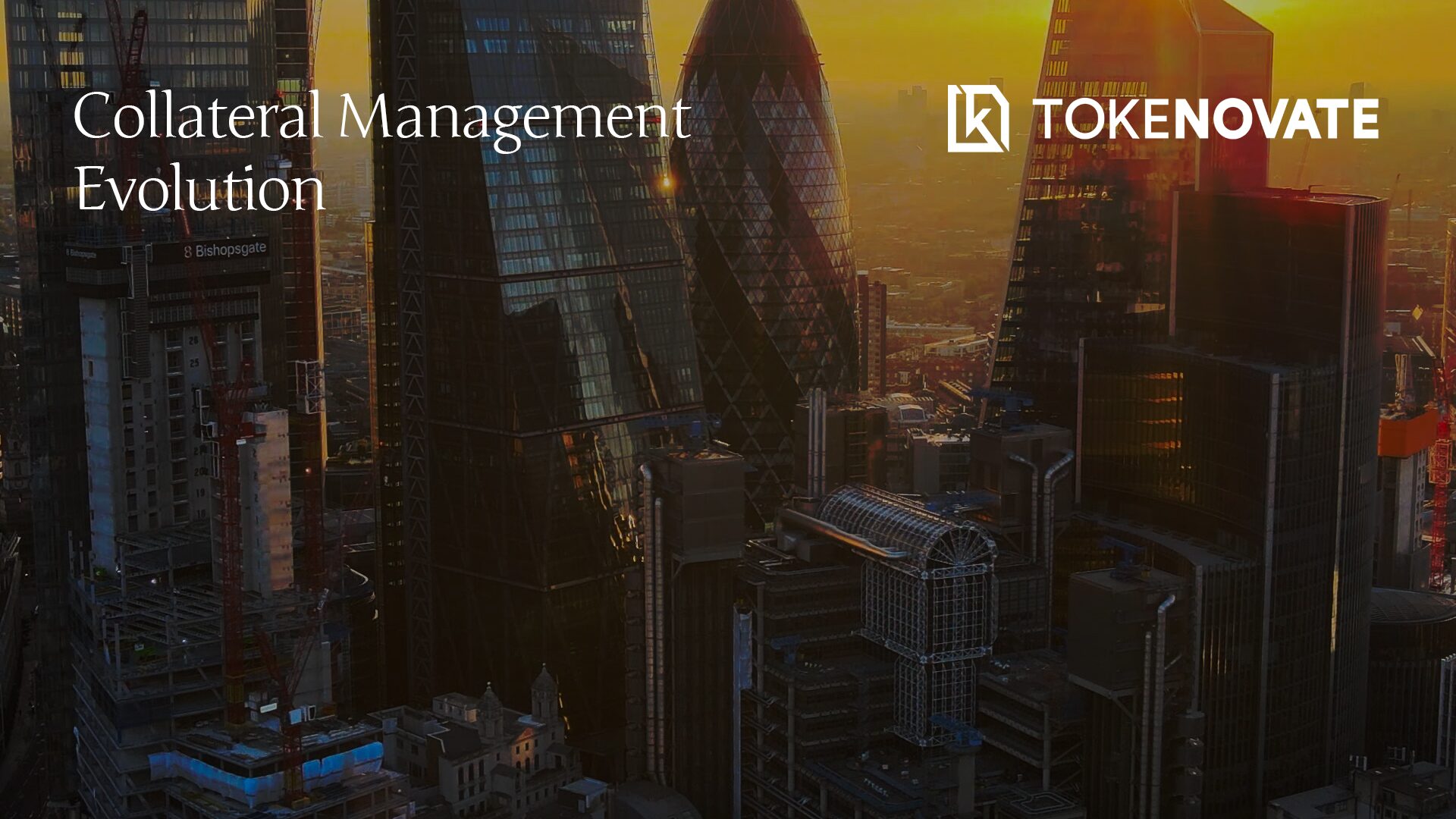With the growing maturity of blockchains – both in terms of available technology and public perception – is the timing now right to address the problems associated with delayed settlements? And, can blockchain-based solutions also enhance the way collateral is managed? The market problems with T+2 are well-known: inefficient, inaccurate and incomplete processes cost money, tie-up liquidity and limit commercial opportunity. Managing the full lifecycle of a trade is still highly manual and unfortunately littered with errors. That said, existing financial market infrastructure is improving, but it is still underpinned by traditional thinking and dated technologies. Data silos and disparate systems remain intact.
Why is that?
Let’s look at some of the root causes of the problem. First, the lifecycle of a trade is a complicated process that involves numerous actions that are triggered by ongoing events and must be completed by the stakeholders. Counterparties of a trade, governed by an ISDA, for example, know exactly the commercial terms they commit to abide by. However, as market conditions change, obligations in the trade may be triggered. Today, much of the work required to execute those events is manually and inefficiently handled by middle and back offices and often inaccurate. Another root-cause problem revolves around the movement and management of collateral assets. It is still cumbersome, costly and the monetary risks are high. Assets are locked, transactions are expensive while liquidity is static. Some obviously make good money from this, but many more are severely hampered in their activities. Finally, there are of course also technology problems present in current operational environments. Although the general acceptance of modern solutions such as cloud hosting and SaaS products is high, implementations of blockchain-related solutions are not yet universal. Separate and disconnected software stacks, often ripe with technical debt, coupled with disparate and disjointed databases spread across every actor, contribute towards a set-up that is not fit-for-purpose as we move forward in an increasingly digital world.

A potential solution
To fundamentally address some of these root cause challenges, many companies now turn to new solutions that tokenise assets, offer smart legal contracts* and integrated workflow set-ups. And what is on display already is promising! Tokenisation of assets, of course, isn’t a new thing. In fact, it’s been around for hundreds of years. And the concept of a cash-ledger is even older. So, at its core, we are not really dealing with anything new. But (digital) tokenisation using the blockchain is still a reasonably nascent phenomenon. There are many institutions and organisations predicting that tokenisation and fractionalisation of assets using the blockchain will offer both a money-making opportunity and a cost-saving tool. For example, in a report from March 2023, Citi GPS stated: “We forecast $4 trillion to $5 trillion of tokenized digital securities and $1 trillion of distributed ledger technology (DLT)-based trade finance volumes by 2030”. And BNY Mellon CEO, Robin Vince, in December last year added: “With a majority of institutional investors interested in tokenisation, distributed ledger technology may represent the next financial frontier.”
An essential part of today’s tokenisation is the concept of a digital twin – an identical digital representation of an underlying asset. Digital twinning solutions can already be found across numerous industries, solving a broad range of problems: from predicting footfall in retail outlets and visualising traffic flows in smart cities, to tailoring individual healthcare plans and simulating scenarios for the planning of pretty much anything. In short, digital twinning helps us make smarter decisions, faster. And it’s no different in the financial services market. Now, imagine for a moment that the creation of a digital twin in a financial services context facilitates the fusion of law, regulation and extensive rights and permissions management with trading economics and blockchain technology. Such a solution would be incredibly beneficial for the industry as a whole and to regulators. Tokenisation of assets is just one of many use cases. Note that a financial digital twin solution should be collaborative and not disruptive, function within existing infrastructures, and just facilitate a more distributed mode of operation and increase overall efficiency.
There are a few different approaches to digitally represent collateral assets. However, fundamentally, it comes down to either replacing existing custody databases and vaults, and creating an asset natively in script on the blockchain, or maintaining existing custody vault functions for a period of time and creating a digital twin of the underlying collateral assets. In either case, they all involve a type of token that needs to encompass legal definitions, rights management and economic value.
What the tokens all have to do at a minimum (above being legally compliant of course) is to continuously synchronise states between the “real-world” and the digital world. However, to deliver the full benefit of a digital twin system, the design of a custody ledger, approach to fractionalisation and transaction management, and ultimately how you improve settlement predictability, is absolutely crucial in order to deliver highest levels of credibility, security and operational performance. Inject into the mix a smart legal contract, and the end-to-end solution would potentially drastically improve the integrated workflow. In addition, an oft-forgotten, less glamorous task, at least compared to trading and technology solutions, but one that is mandatory, potentially very costly and increasingly in the regulatory spotlight is reporting. Many organisations have been hit with huge fines for not being compliant, and with existing trade reporting and new Digital Reporting Regulations (DRR) set to be rolled out globally over the next few years, setting up an accurate and timely reporting engine will be essential. By implementing a blockchain-based solution, which acts as a single source of truth, organisations can store, collect, monitor, verify and share almost instant access to immutable information.
What’s holding us back?
Despite the accelerated pace of digitisation, standardisation and collaboration between market actors have lagged behind. This disconnect has resulted in many gaps throughout the financial system, as well as highly siloed infrastructures where money moves on one set of rails, and assets on another. Collapsing siloed infrastructures into one global infrastructure has the potential to put both money and assets on the same rail, thus making it possible to streamline processes, achieve efficiencies and reduce time to settlement. By transforming the management of collateral, custody and settlements through the use of a virtualised microservices system based on the blockchain, the general risk positions in the system, and specifically of Counterparties, can both be decreased and improved.
What’s next?
To completely transform the management of the entire lifecycle of a trade (including collaterals and settlements) in one go isn’t really realistic, or indeed necessary. There are, however, areas where new solutions could be introduced now. Especially, custodians and clearing houses should investigate how to tokenise, fractionalise and automate its systems to fully take advantage of the cost savings and enable the liquidity dynamics integrated workflows and blockchains can offer.
Note: this blog post was originally published on Digital Bytes.
Footnote:
* The Law Commission in England and Wales defines a smart legal contract “as a legally binding contract in which some or all of the contractual obligations are defined in and/ or performed automatically by a computer program”. The Law Commission advice on smart contracts is available here.


